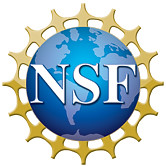
Albrecht Schmidt with telepresence robot
At the beginning of July I had a chance to visit my colleague Albrecht Schmidt and his HCI Lab at the University of Stuttgart. This summer Albrecht is hosting eight US student participants in our International Research Experiences for Students (IRES) program. The program is funded by the National Science Foundation, Office of International and Integrative Activities. You can read about the team on the UNH HCI Lab website. My visit to Stuttgart was a chance to talk to the students and find out first-hand about their research activities. I also participated in the 2016 Quantifying User Experiences (QUE) summer school, where I lectured on topics in digital signal processing.
Our NSF IRES students are making quick progress with their HCI Lab colleagues, and I’m looking forward to their final presentations this week. On the cultural side, I really enjoyed the trip organized for QUE 2016 participants to Tübingen, a town with pretty architecture and a scenic riverfront.

Tübingen riverfront



